The Legacy of White Buffalo Girl, and the Resiliency of a People
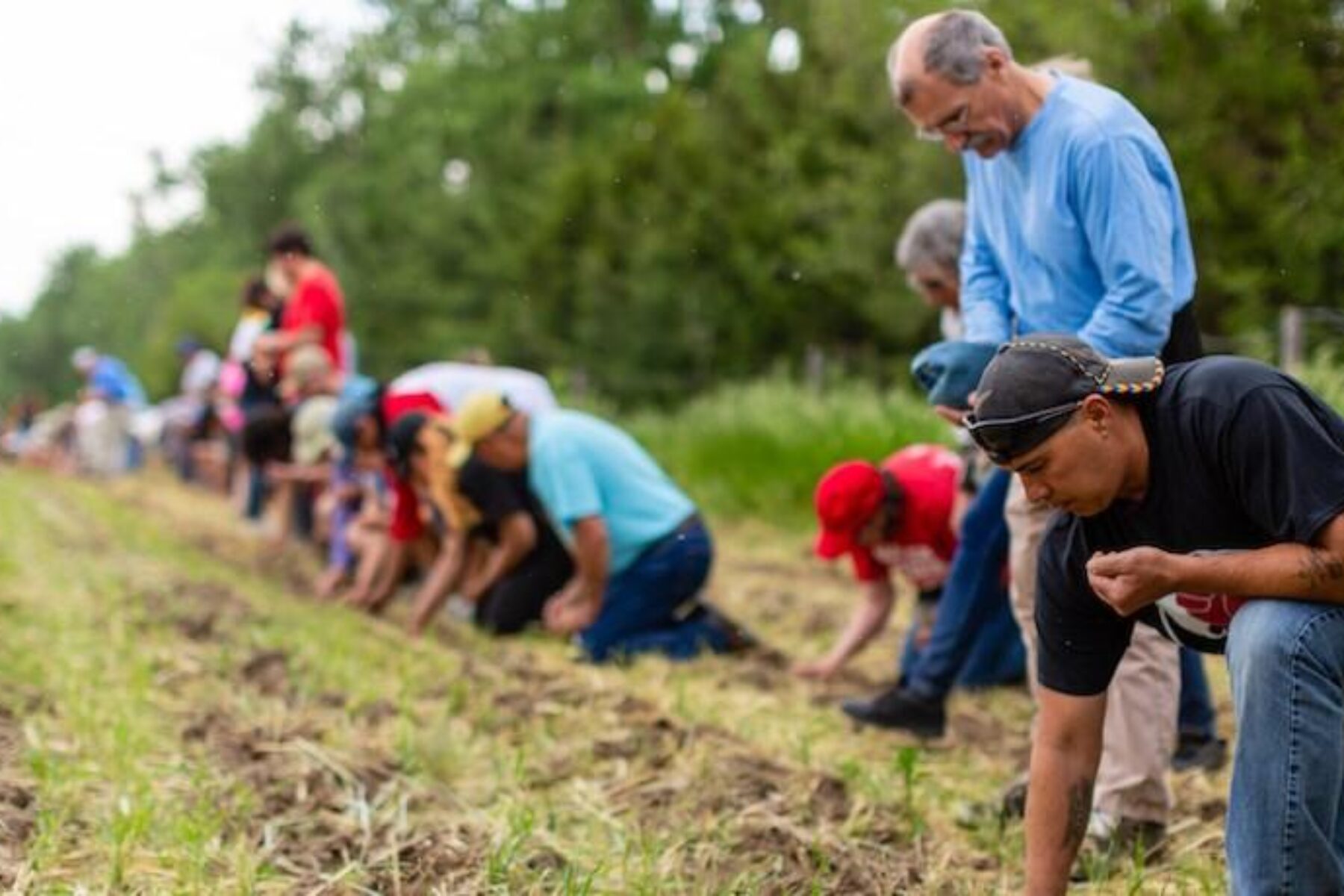
This article is part of “History Along the Great American Rail-Trail™”—a new project launching this summer on TrailLink.com™ that will include hundreds of stories and points of interest along the 3,700-mile route.
Special thank you to the Ponca Tribe of Nebraska and author Joe Starita for their assistance with this story.
In Laurel Hill Cemetery just outside the town of Neligh, Nebraska, stands a gravestone. Like so many others here, it’s a small monument to loss, but alone among the thousands of such markers, this one is perpetually covered in votive offerings: coins, toys, beads, flowers and more, a pop of unexpected vibrancy in stark contrast to its surroundings. “If you go up there right now, there’d be flowers around the gravesite,” said Neligh’s mayor, Joe Hartz. “It’s inspiring—to say the least.” By cemetery policy, this is the only headstone allowed to be so adorned year-round.
The gravesite represents grief, suffering and a historic injustice—but it’s also a monument to hope and a tangible reminder of one small town’s commitment to honoring a promise made long ago. This final resting place marked the end of a short life but the beginning of a generations-long story. Here lies White Buffalo Girl.
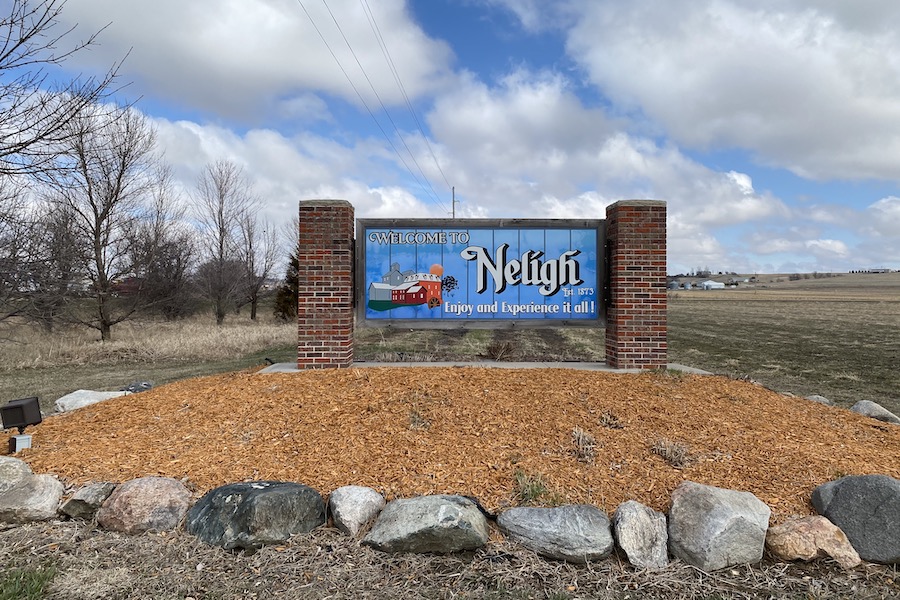
In the spring of 1877, Neligh was a barely established frontier town in northeast Nebraska, some 40 miles south of the Dakota Territory. It was there, near the banks of a river known to the native Ponca as Nishu’de ke (and to the settlers as the Missouri), that the tribe’s traditional way of life was nearing its end. The land that the Ponca called home was by this point a scant fraction of what it once was, having been steadily diminished by government treaties—a loss made even more grievous by the U.S. government’s subsequent decision to relocate the tribe some 600 miles south to what was termed Indian Territory in present-day Oklahoma.
They “turned their faces south … starting down a long road they had never traveled before,” writes Joe Starita in “I Am a Man,” a meticulously researched book on the Ponca’s chief, Standing Bear, and the Trail of Tears the tribe endured. Forced to leave behind everything they knew as well as many of their possessions, the Ponca were marched overland to their new home on a journey that would take 55 days—and several lives. The second lost was an 18-month-old named White Buffalo Girl.
A Promise Made
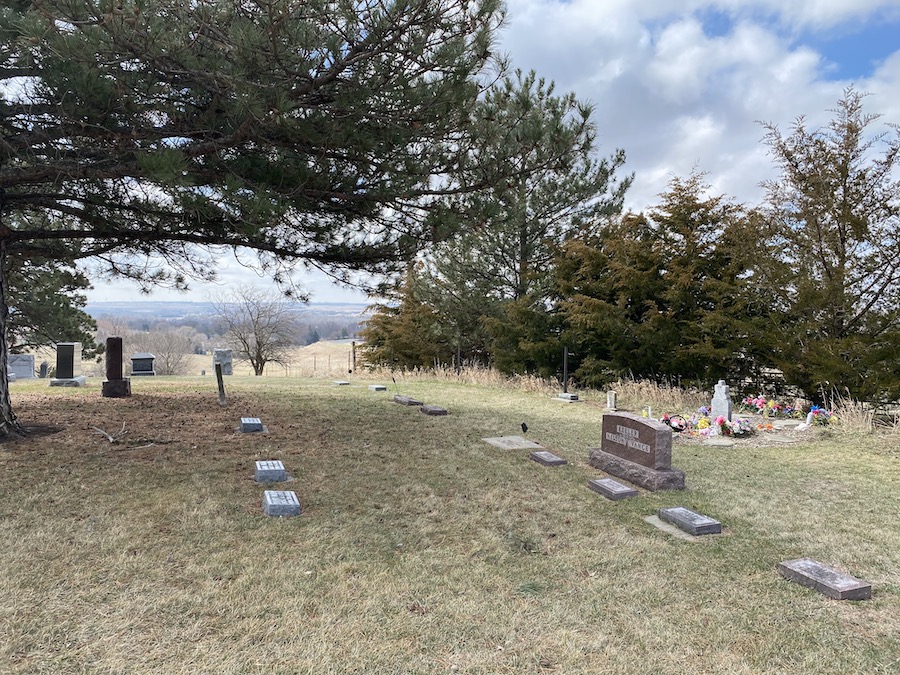
“It was the spring from hell,” said Starita. Even in mid-May, he explained, the weather that year “was damp, cold, and dreary. What roads existed were muddy from torrential downpours.” A week into their journey, the Ponca set up camp along the Elkhorn River, just outside the fledgling town of Neligh. It was May 23, 1877, that Moon Hawk and her husband Black Elk lost their young daughter, likely to pneumonia.
“Put yourself in her shoes,” suggested Starita. “This young mother has been trudging through cold rain and mud for days. She’s lost her homeland, her belongings, and now her only daughter. She clung [to her] for hours, just wailing inconsolably.”
With the help of the military commander in charge of the march, the Neligh town carpenter was located and asked to prepare a small coffin for the child. The next day, the Ponca gathered along with many of the townsfolk to lay White Buffalo Girl to rest under a simple wooden cross. Knowing full well that he and his wife would be given no time to grieve, that they would be forced to leave her behind that very day, Black Elk asked through a translator that the people of Neligh care for his daughter’s grave as they would one of their own.
Little could he suspect how very seriously the people of Neligh—and their children, and their children’s children—would take the oath they made.
“I want the whites to respect the grave of my child just as they do the graves of their own dead. [We] don’t like to leave the graves of [our] ancestors but we had to move and hope it will be for the best. I leave the grave in your care. I may never see it again. Care for it for me.”
Black Elk, father of White Buffalo Girl (translated)
“The unity and compassion that these non-Ponca had for the Ponca was a rare thing back then,” said Stacy Laravie, the Ponca Tribe of Nebraska’s tribal historic preservation officer and great-great-great granddaughter of Chief Standing Bear. Laravie, who along with the tribe’s culture director, Nick Mauro, told the story of the Ponca’s relocation said, “I’d like to think in that moment in time, everyone there who was a parent or grandparent all felt the exact same.” Added Mauro: While the “Ponca couldn’t practice their traditional ceremonies, the people of Neligh could practice theirs.”
This meeting between the residents of Neligh and the Ponca was brief, explained author Starita. “With bayonets at their back, the Ponca were forced onward to Oklahoma.” Ultimately, a third died as a result of this relocation, either from the rigors of the journey itself or by starvation upon arrival to their assigned home, a bleak, stony land unsuited to farming.
RELATED: Landmark and Legacy: Nebraska’s Chief Standing Bear Trail
A Promise Kept
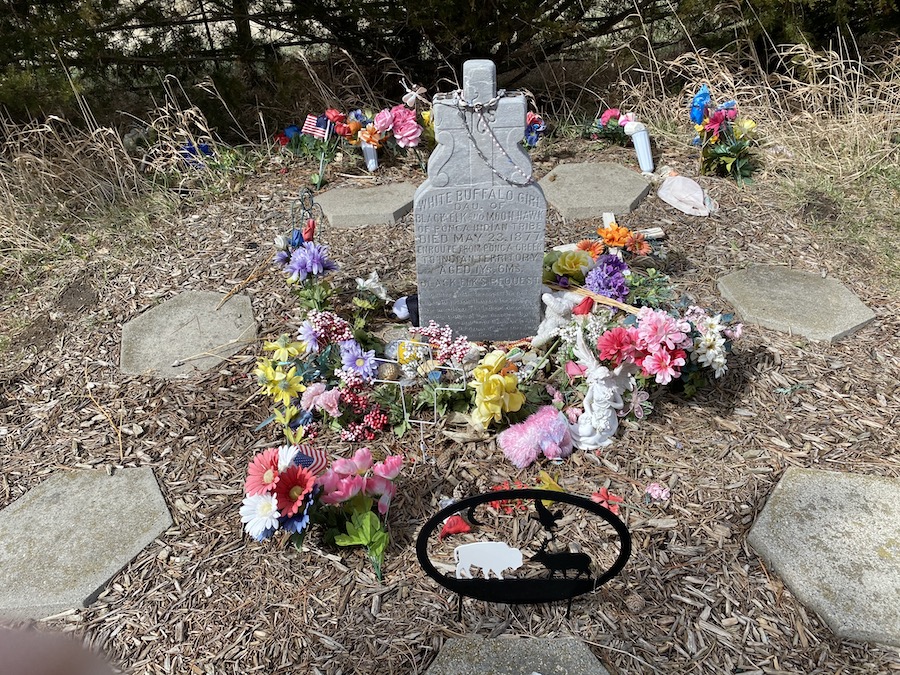
To this day, White Buffalo Girl’s gravesite is honored, as it has been for 144 years now. Levern Hauptmann, a longtime Neligh resident, historian, a director of the Antelope County Historical Society, and self-described old-codger, said he still remembers his first visit to the gravesite during a fourth-grade school trip. It was the first of many over the ensuing decades to a place that he says many in Neligh and the surrounding communities find meaningful.
“Our second-born daughter—she didn’t make it, she never breathed,” shared Hauptmann. As a parent who has experienced such loss firsthand, he says the gravesite is especially poignant to him. “You can’t help but think of the cruelty to that child, to her family.” But Hauptmann says the respect shown to White Buffalo Girl—and by extension, the Ponca themselves—is stirring. “Black Elk asked that his daughter’s grave be respected, and for all these years we have. It’s a moving thing, and I’m just pleased to be a part of it.”
Mayor Hartz noted that the care of the gravesite isn’t a government function. “People just pick up the torch and carry it on. They watch out for the gravesite; they commit their time and energy to respecting [White Buffalo Girl].” He said he hopes that whoever follows him as mayor “will also have that same feeling of inclusion and camaraderie and caring.”
A Unified Goal
A teacher for 35 years, Art Tanderup looked forward to becoming “what some would probably call a hobby farmer” on his wife’s family farm outside of Neligh when he retired in 2009. “It’s a small farm, only 160 acres” where he and his wife Helen grow corn, rye and soybeans.
The couple wasn’t long into a peaceful retirement on the farm when “we got a knock on the door from a representative of TransCanada,” the company (since renamed TC Energy) responsible for the hotly debated Keystone XL Pipeline meant to carry heavy crude oil across the United States to refineries in Texas. The pipeline’s proposed route, the rep explained, cut across the Tanderups’ farm.
As the Tanderups researched the pipeline, they quickly concluded that the risks far outweighed any monetary benefit and didn’t want their land used for the project. “We’re right on top of the Ogallala aquifer,” he explained. “A leak could contaminate the whole thing and there’s really no way to clean a spill.” The Tanderups found likeminded opposition in a group named Bold Nebraska that had formed a coalition between farmers, ranchers and Native Americans.
Working with Bold Nebraska in late 2013, the Tanderups volunteered to hold a four-day spirit camp on their farm in protest of the pipeline. The camp—which included representatives from eight local tribes and 50 or so attendees—was situated across the pipeline’s proposed route and, as near as could be determined, in the path of the Ponca’s long-ago Trail of Tears as well.
It was over a campfire one cold evening during the spirit camp that Art met Mekasi Horinek, a member of the Ponca Tribe of Oklahoma. The two men talked late into the night about the history of the Tanderups’ farm and its location along the Ponca Trail of Tears. “Mekasi told me, ‘my grandfather walked that path as an 8-year-old boy.’”
Seeds of Resistance
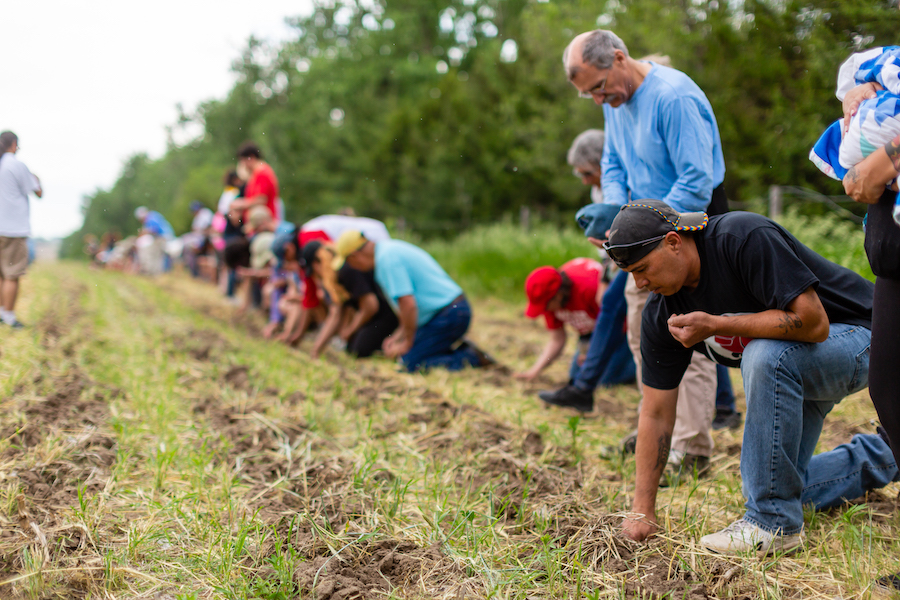
Horinek explained to Art that when the Ponca were forced to leave their northern Nebraska home, not only were they obliged to leave behind many of their possessions, but even more devastatingly, they’d already planted that year’s crops—so even had the land where they were being relocated to been suitable for farming, they had no corn seeds to plant upon arrival. Laravie said this loss was particularly painful to her people and that it was hard for her “not to get deep and spiritual about corn. It feeds not only our bodies, but our hearts and minds. It ties us back to our ancestors.”
As Art and Horinek talked about this loss of the Ponca’s sacred corn, Horinek suggested trying to locate some. If it could be done, would Art and Helen allow it to be planted on their land? Art didn’t hesitate. “I said, ‘absolutely.’” What’s more, Art suggested that like the sprit camp itself, the corn should be planted in the middle of the Keystone Pipeline’s proposed route. It would be what Horinek’s grandmother, a Native activist, would come to call seeds of resistance.
But first the corn had to be found.
Horinek started with the Lakota people, to whom the government had given the Ponca’s land after forcing them off it so long ago. After the Lakota had harvested the final crop planted by the Ponca, some seeds had been saved in a medicine bundle, totems reflecting the corn’s significance. Against all odds, Horinek tracked down the bundle that had been passed on for generations and bartered with its keeper for the dried kernels within.
“It was a pint, maybe two handfuls” of sacred red corn, recalled Helen Tanderup. It was all the Ponca corn that could be located—and it was 137 years old.
Have Faith; It’ll Grow
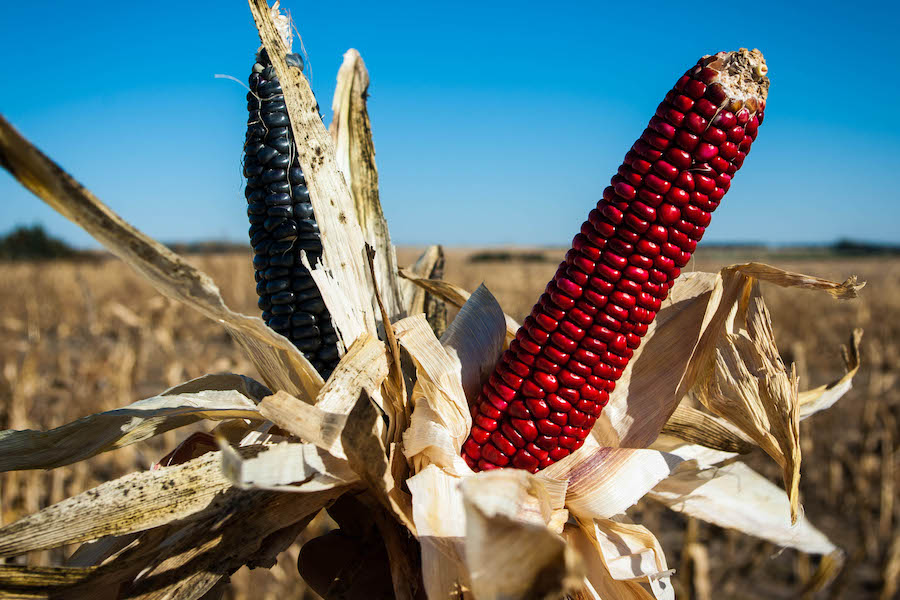
As a farmer himself, Art admitted to being skeptical of their chances. But collectively, the Ponca were unfazed. “They said, ‘have faith; it’ll grow.’”
In addition to sacred red corn, Horinek secured blue, gray, white and painted corn varieties from neighboring tribes. “We held traditional ceremonies before we started,” recalled Art, and proceeded to plant four acres of corn by hand with the help of some 90 volunteers.
The group ran out of seed before they ran out of land, so Horinek undertook another trek to bring back more corn seed, with just he and Art remaining to plant it.
“If my grandfather were here today,” Art recalled his friend saying, “he would bless your planter.” So Horinek performed the rite himself and the remaining acre of land was sown with modern, mechanized methods. So confident were Horinek and his fellow Ponca that their ancestral red corn would thrive that they held none back in reserve. “It was the same answer,” recalled Art. “‘Have faith; it’ll grow.’ And it did.”
Laravie says that resiliency is one of the defining characteristics of her people. The same might be said of their corn.
Land Taken and Land Returned
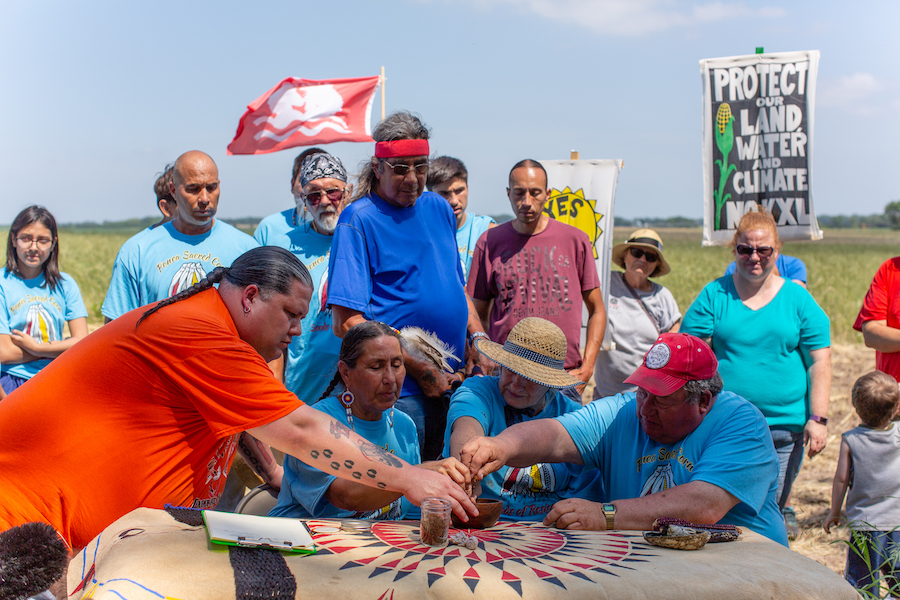
That first planting of four acres in 2014 was followed by a wildly successful harvest—enough corn to support 80 acres of plantings across Ponca-owned lands the following year. The ceremonial plantings and harvests have since become an annual event that draws Ponca and non-Ponca alike.
Art said that he and Helen feel a strong connection to the land; turning introspective and almost poetic, he explained, “I know every inch of this farm; I try to treat it with respect and in return, it yields its crops. We reach down and grab a handful of soil and bring it to our nose and smell what’s in it… we let it sift through our hands and fall back to its place. It’s almost a relationship ceremony. You get so attached to your land.” It’s this deep attachment that makes what the Tanderups did next even more remarkable. As the sacred corn ceremonies continued over the years, the Tanderups started contemplating their relationship to the land that had been in Helen’s family for generations. “At one point, this whole region was Ponca land,” said Art. “We decided it should be Ponca land again.”
In June of 2018, the Tanderups formally deeded a portion of their farm, about 10 acres, to the Ponca Nation. Recalling the forced relocation of the tribe, Art said, “Our ancestors did something clearly wrong. We hope we can be a small part of making it right. Knowing that we’re giving the land to people who might take care of it even better than we could is something powerful.”
Resiliency and Regrowth
Mauro, the Ponca Tribe of Nebraska’s culture director, is quick to point out that the Ponca’s story didn’t end when the Old West did. “Much of what’s written about Natives often either relegates tribes to just a sad story or banishes them to history.” He notes that for the 4,500 or so Ponca alive today, there’s very much a lived experience in the way its traditions have been reborn and live on. “The tribe is still here, still growing. The Ponca aren’t just a historical footnote.”
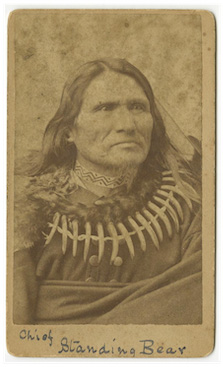
In many ways, the Ponca have been at the vanguard of history. Two years after their forced relocation, Chief Standing Bear successfully argued in U.S. District Court that Native Americans are “persons within the meaning of the law,” thus marking the first time that Natives were granted some semblance of civil rights. After becoming the last tribe to lose official government recognition—a process of attempted assimilation from the 1940s through the 1960s that was referred to by the federal government as termination—the Ponca regained their tribal status in 1990.
Any group’s history that includes the term ‘trail of tears’ is certainly a grim one, but Chief Standing Bear’s great-great-great-granddaughter says the story also represents hope. Laravie said she would visit the gravesite of White Buffalo Girl with her father and “He wouldn’t focus on the negative side of the Trail of Tears.” Looking at the gravesite, he’d instead focus on the goodwill and kindness it represented. “He’d say ‘look, there is good in the world.’”
“Regaining our land, regaining our corn, regaining our tribe … we’re a resilient people,” said Laravie. “Ponka onthin. We are Ponca.”
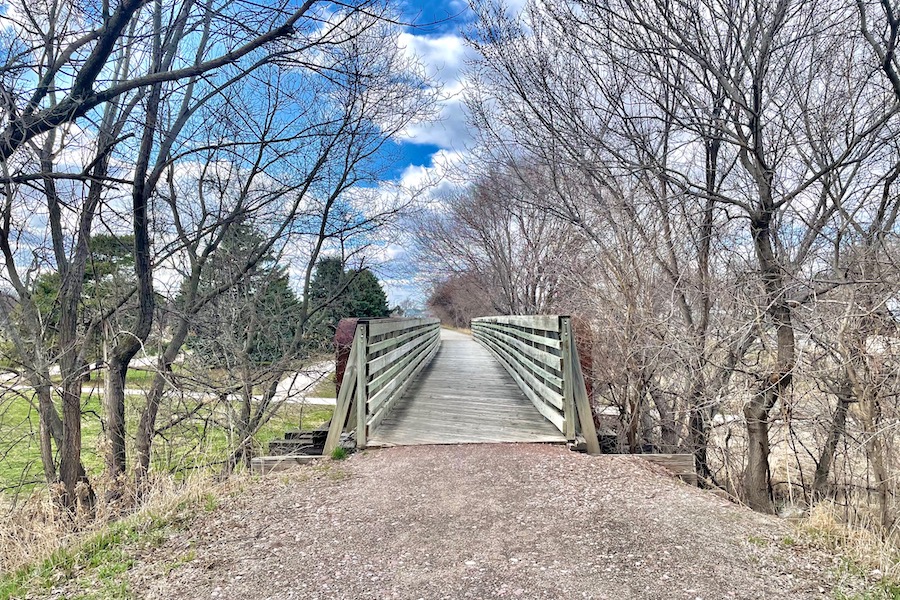
Spanning a significant portion of Nebraska, the Cowboy Recreation and Nature Trail is a key component of the country-spanning Great American Rail- Trail™ and passes within a mile of White Buffalo Girl’s gravesite as it skirts the south side of Neligh. At Riverside Park, you’ll see a small display of military equipment; exit the trail here and head north through town along sidewalks on L Street, where you’ll pass by the Antelope County Museum (admission is $5, and hours vary by season). You can find plenty of additional information about the region’s history here and about White Buffalo Girl. A half-mile after leaving the trail, take a slight right on Cemetery Road where the sidewalk ends.
Prairie plants, wildlife and historic relics of the past—the Cowboy Trail’s 321 miles has it all, enthused Hannah Jones, the assistant division administrator for the Nebraska Game and Parks Commission. “Whether you choose to ride the entire stretch or enjoy a few miles, the trail offers biologically unique landscapes for everyone.”
She noted that trail signage is being developed outside of every town from Valentine to Norfolk in order to help long-distance users identify where they are.

Donate
Everyone deserves access to safe ways to walk, bike, and be active outdoors.